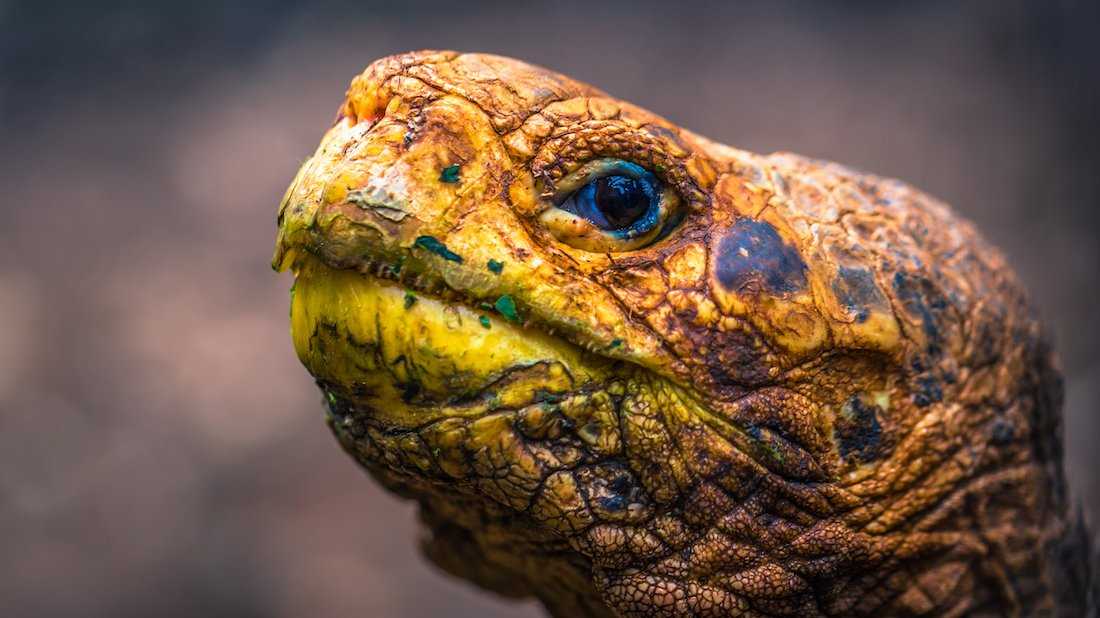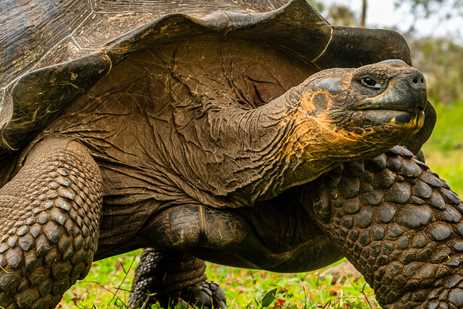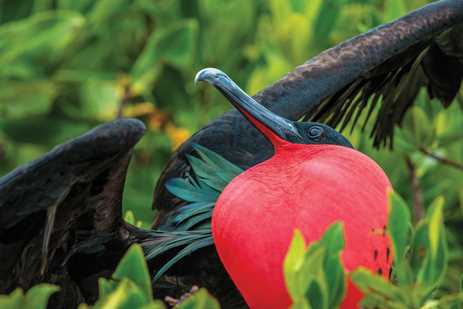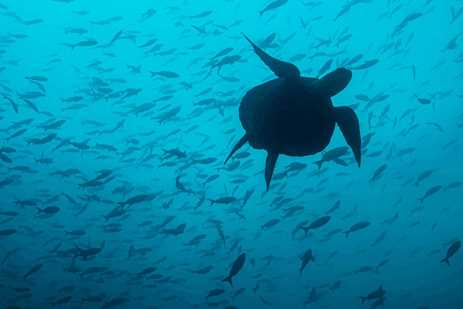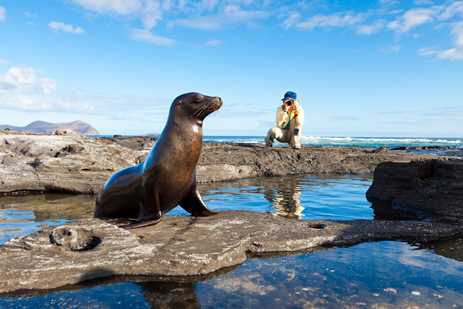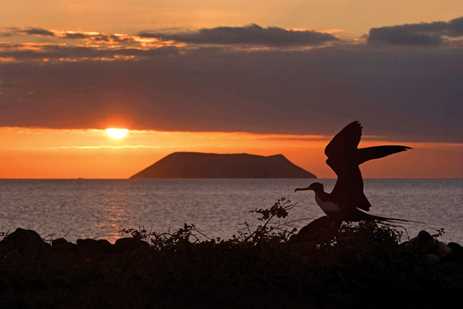The heartbreaking tale of Lonesome George, the last remaining Pinta Island tortoise who never found a mate, has been shared around the world since his death in 2012. But there’s another Galápagos giant tortoise, Super Diego, who is poised to join his ranks as a global conservation ambassador. Although Diego took a considerably different approach to get there, the tale has a much happier ending!
Get Inspired By Photos, Videos, Webinars, Stories, And Exclusive Offers.
Sign Up
For one, Diego is still very much alive, and despite predating the Prohibition era, he is quite the prolific procreator. After fathering 900-some offspring through a breeding program set up to save the Española Island species, this centenarian has finally retired to the wilds of his youth. Here is his remarkable story.
The Reptilian Relics of the Galápagos
In general, isolated islands like the Galápagos tend to be hotspots for unusual species, says Emma Ridley, a Naturalist and Expedition Leader for Lindblad Expeditions-National Geographic who has been working and living in the Enchanted Isles since 1995. Some species, like the giant tortoise, went extinct on the mainland but survived, and evolved, in these island refuges.
To Ridley, this is what makes it so captivating to encounter them in the wild—the chance to time travel by observing them just as the first Spaniards who set foot on the islands in the 16th century did. These gentle giants are rarely fazed by anything, much less humans, so they largely ignore onlookers and go about their day grazing in the grass, chomping on leaves, wallowing in a mud bath, or sleeping for up to 16 hours daily.
“They inspire a feeling of peace and wellbeing for me,” Ridley says. “They don’t really seem to worry about too much and have such a stress-free existence.” With an average lifespan of well over 100 years, this slow and steady lifestyle clearly pays off.
Saving a Keystone Species
As the sole megaherbivores in the islands, Galápagos giant tortoises have given the archipelago much more than its moniker (“galápago” is an old Spanish word for “tortoise”)—they’ve also shaped the vegetation. Driven purely by the pursuit of their favorite meal, the tortoises unwittingly scatter seeds, packaged in fresh fertilizer, across the land. If these critical keystone species disappeared, the deeply interdependent ecosystems of the Galápagos would soon follow.
This was nearly their fate, after 18th-century buccaneers and whalers plundered an estimated 200,000 tortoises for fresh meat at sea; and then, early settlers dealt two more destructive blows in the forms of habitat loss and invasive species. By the time conservation movements began to form in the 1960s, only a few thousand individuals remained.
Sadly, two of the 14 endemic subspecies had been entirely wiped out and others were on the brink of extinction. On Española Island, only two males and 12 females of Chelonoidis hoodensis ancestry remained in the wild. They were brought to the then-nascent Charles Darwin Research Station on Santa Fe Island as a hopeful breeding colony and researchers began searching zoos around the world for DNA matches.
The Making of a ‘Conservation Hero’
In 1977, one was finally found: a 50-to-60-year-old male at the San Diego Zoo, hence the name Diego. Despite his age, he became an extremely active contributor to the team—where the “Super” comes in—ultimately responsible for 40 percent of the repopulation efforts. As a guide, Ridley spent 25 years seeing Diego and sharing his story on a weekly basis.
“Most of the time, you could see him either chasing a female or actually catch him in the act,” she recalls. “The only time a male makes noise is when they’re copulating, this kind of loud [grunt]. So, you could hear him from far off and know it was Super Diego in action!”
Diego proved especially necessary for genetic diversity as one of the wild males failed to produce any viable eggs. The other, called E5, preferred a more reserved reproductive style. E5 may have lacked Diego’s charisma, but he proved particularly potent, contributing the remaining 60 percent. Over five decades, the colony’s collective efforts helped to repatriate 2,000 tortoise toddlers to Española and reached a state of natural recruitment—meaning enough native-born tortoises make it to reproductive age to continue to sustain the species. They even began to repopulate Santa Fe, as the island’s extinct species were also saddlebacks.
With a job well done, in January 2020, it was time for Super Diego and his compatriots to join their plentiful progeny. To ensure non-native seeds wouldn’t be taken to the island, the tortoises were first placed in quarantine. Soon after, the rest of the world followed in response to the COVID-19 pandemic. When June rolled around and it was time for Diego to go, the research station was still shut down, making for a relatively unceremonious return journey. Ridley and her team didn’t even get a chance to say, “adios.”
“We felt a bit bereft,” she says, “and were left to wonder how he would like the wild after spending so long in captivity.”
A Well-Earned Retirement
Nearly two years later, in February 2022, they got their answer when the Good Morning America crew joined a Lindblad Expeditions-National Geographic voyage as part of their “Extraordinary Earth” series.
WATCH DIEGO IN THE WILD ON GOOD MORNING AMERICA >
Equipped with a special drone permit from the National Park Directorate and tracking coordinates from Galápagos Conservancy, which now runs the tortoise program, the National Geographic Endeavour II headed for the waters off Española Island to see if they could locate Diego. After five hours of searching, there he was, asleep beneath the shade of a prickly pear tree, his scaly limbs and long neck splayed out in blissful contentment—looking just as he had back at the research station.
“We were all a bit teary-eyed on board, all the naturalists looking at the screen,” Ridley recalls. “We got some closure seeing him back in his real habitat… after over a hundred years away from home.”
Diego’s is not the giant tortoises’ only story of hope; even George’s may soon be amended with a happier ending. Advancements in genetic analysis have enabled researchers to find hybrid populations who are partly descended from the Pinta and Floreana Islands. Breeding programs are now at work to resurrect these islands’ long-lost reptiliant residents. It goes to show that when scientists, researchers, nonprofits, government leaders, and community members come together to take action, we can make the difference between a cautionary tale and a hero’s journey.

